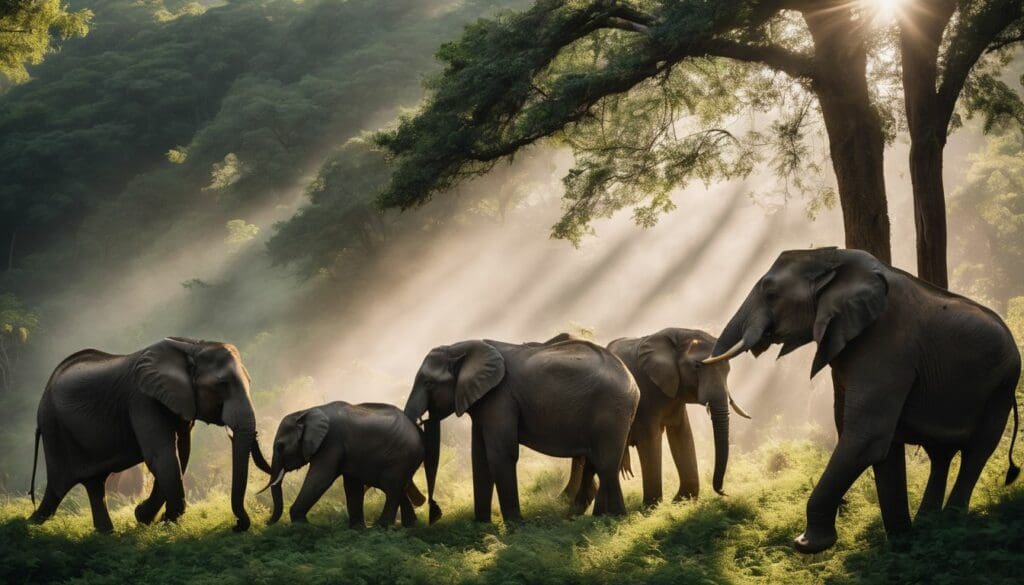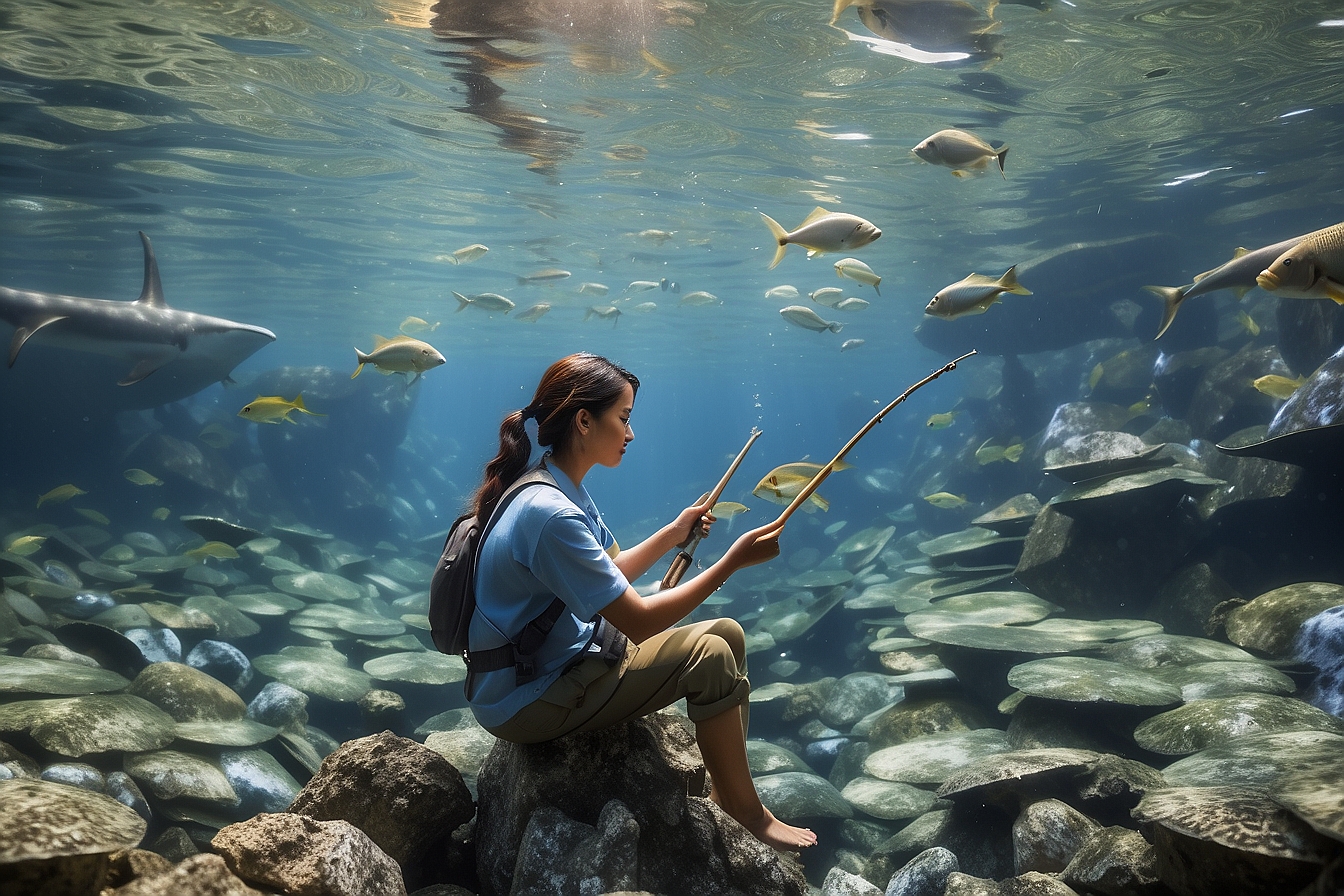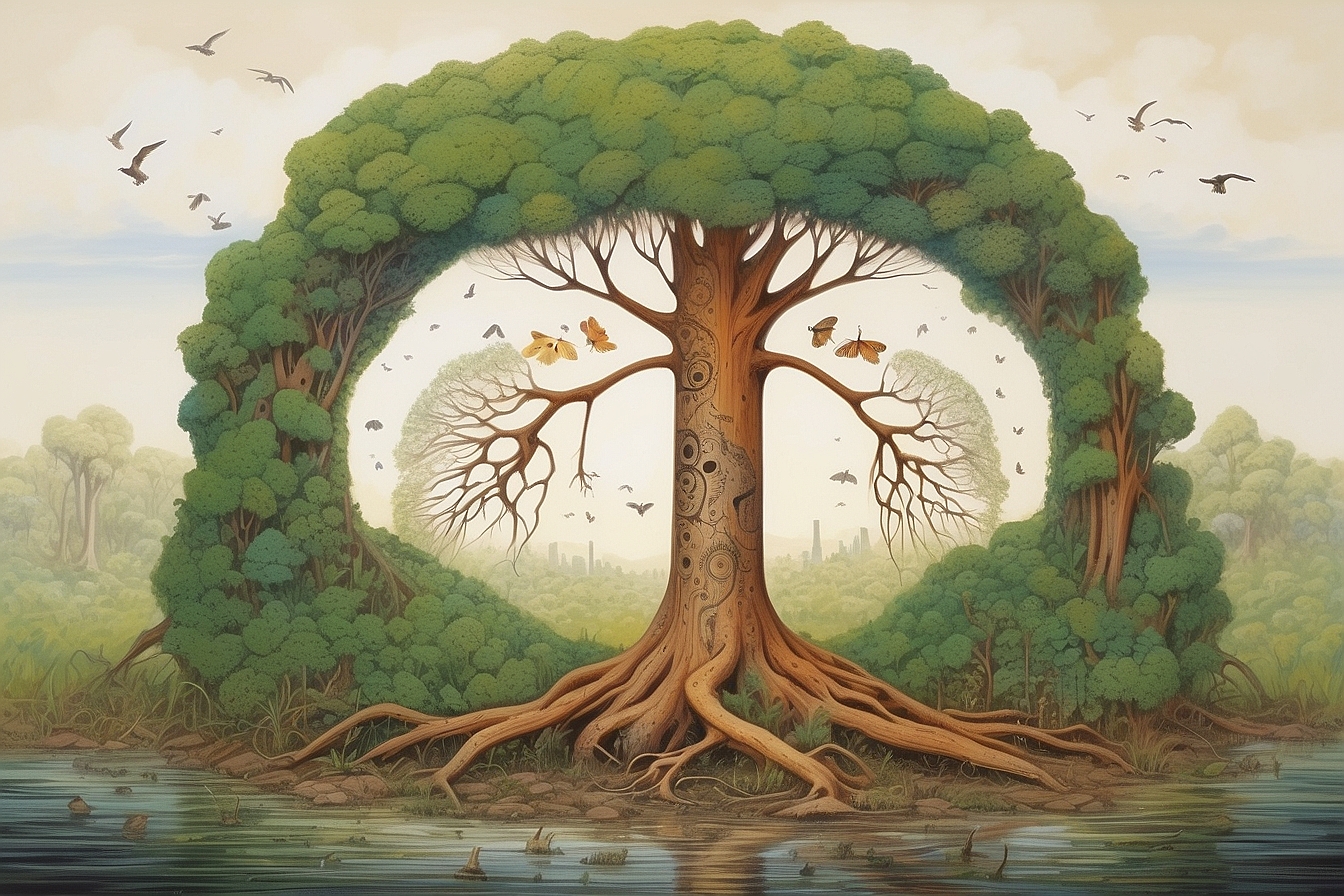We all feel a profound sense of responsibility when considering the fate of endangered species teetering perilously on the brink of extinction. As dedicated champions for biodiversity, we’ve witnessed with our own eyes how critically endangered creatures battle against overwhelming odds and have immersed ourselves in conservation efforts to reverse their fortunes.
Our article offers pertinent insights into resuscitating populations languishing on the Red List, chronicling heartening success stories and delineating strategies that genuinely effect change.
Immerse yourself in our narrative to find rays of hope for our planet’s most imperilled residents.
Key Takeaways
- Protected areas and national parks are crucial for the survival of endangered species, providing safe environments where they can live without human threat.
- Captive breeding programs play an essential role in increasing population numbers and genetic diversity before reintroducing animals into their natural habitats.
- Strong legal frameworks like the Endangered Species Act and international agreements through CITES are vital to enforce measures that protect imperiled creatures from harm.
- Public awareness campaigns educate communities about biodiversity’s importance and garner support for conservation efforts through social media, events, and educational materials.
- Collaborative efforts between governments, organisations, scientists, and local communities contribute significantly to the recovery of endangered species across global boundaries.
Understanding the Red List: The Plight of Endangered Species
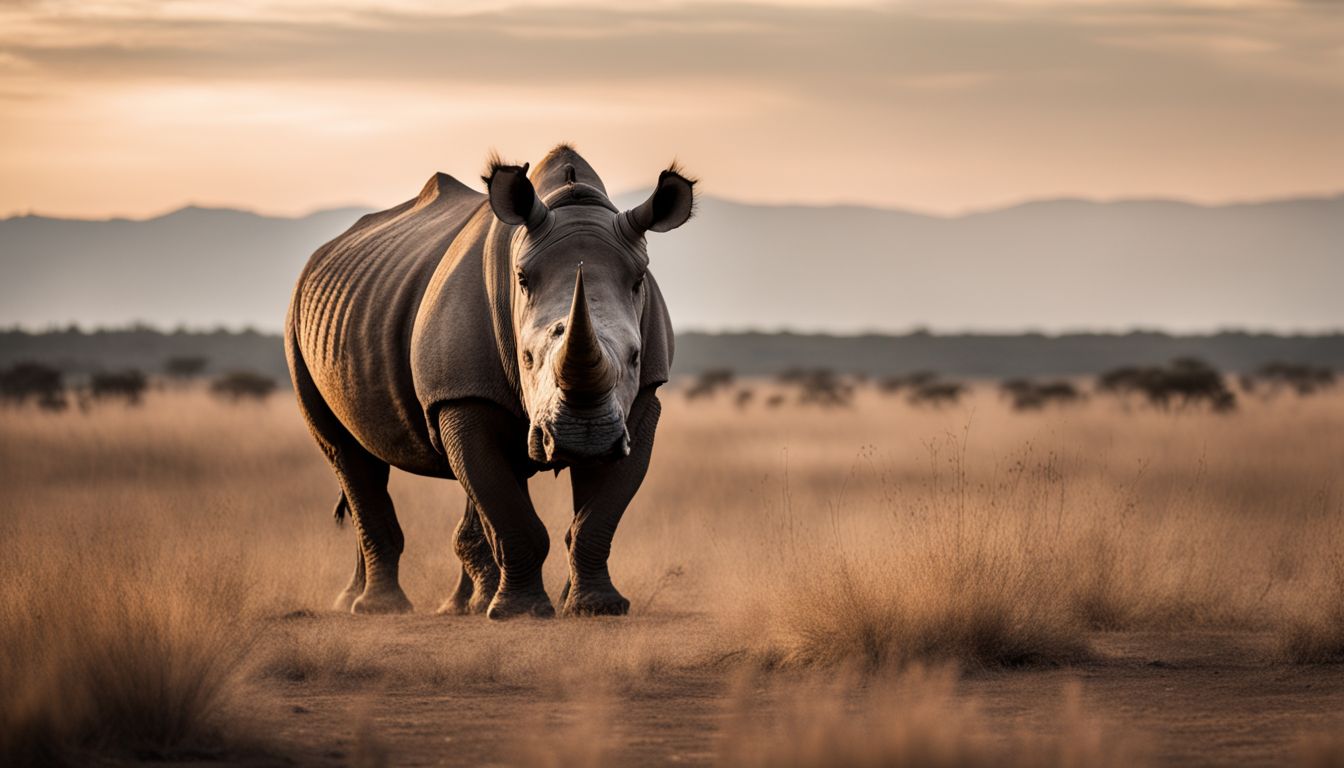
Moving from an overview to a closer look, let’s dive into the Red List and why it matters to every one of us. The International Union for Conservation of Nature’s (IUCN) Red List paints a picture that’s both vital and alarming.
It categorises species based on how close they are to vanishing forever. Species slide from ‘Least Concern’ all the way down to ‘Critically Endangered’. This powerful tool helps guide our conservation efforts by showing which creatures need urgent help.
Imagine a world without the majestic tiger or the playful dolphin; that could be our reality as more animals face habitat destruction and hunting pressures. Loss of biological diversity strikes at the heart of environmental health, impacting ecosystems globally.
Human activities push many species towards endangerment, with climate change exacerbating this plight. Conservation actions must prioritise those in critical habitats if we wish to maintain nature reserves bursting with life for future generations to cherish and protect.
How are Endangered Species Identified?
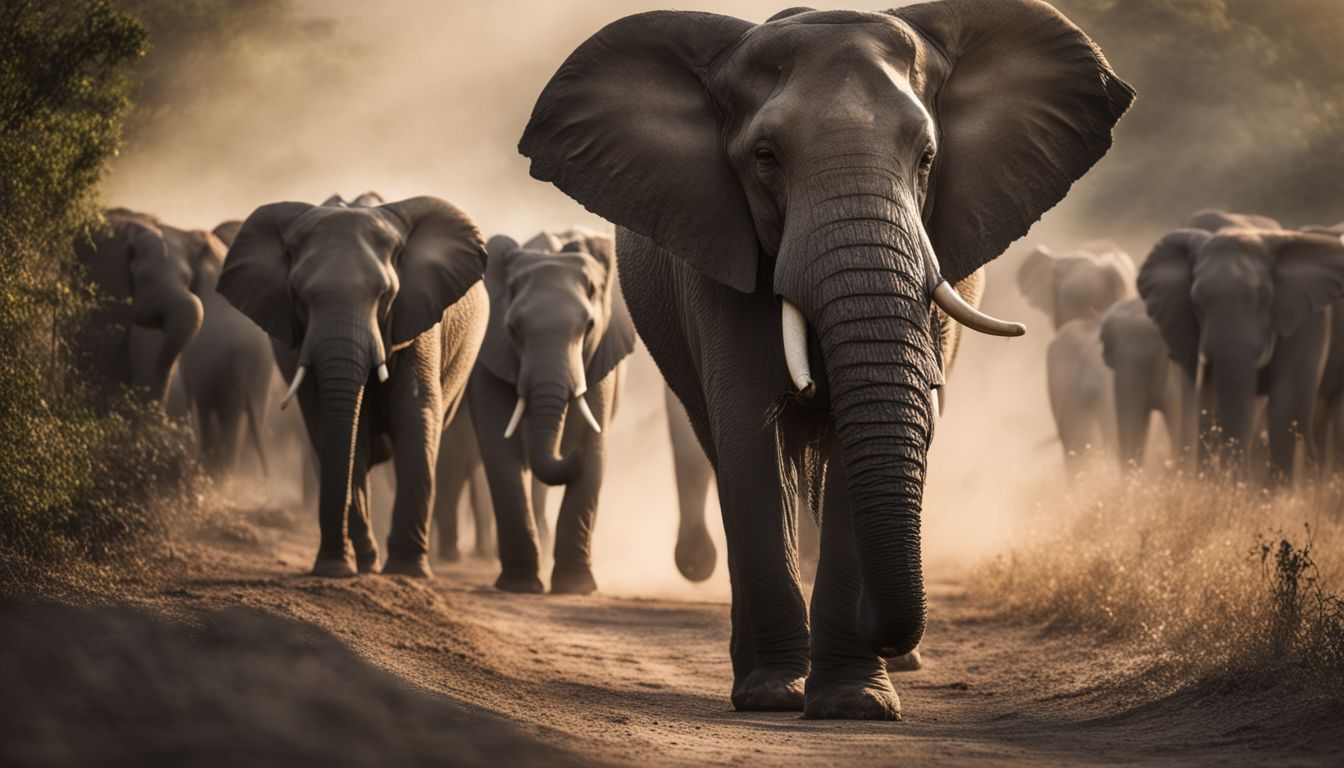
We look closely at population trends to identify endangered species. The International Union for Conservation of Nature’s Red List of Threatened Species plays a crucial role in this process.
Experts assess population sizes, rate of decline, geographic range, and the impact of human activities on these factors. They also consider whether the species has become critically low in numbers or if its natural habitat is deteriorating or shrinking.
These assessments give us a detailed picture of conservation status, allowing us to categorise each species accurately. The IUCN Red List categories range from Least Concern to Extinct, with levels like Endangered and Critically Endangered signalling immediate attention is required.
Scientists use robust criteria based on genetic diversity, reproductive rates, and threats such as over-harvesting or habitat fragmentation.
With clear evidence in hand, we can tailor recovery plans for those facing extinction’s edge. These plans include protected areas establishment and initiatives against illegal trade covered by CITES (Convention on International Trade in Endangered Species).
Armed with knowledge and strategy, our next step involves rolling out practical measures that offer these precious beings a fighting chance at survival. Now let’s explore ‘Strategies for Saving Endangered Species’.
Strategies for Saving Endangered Species
Diving into the myriad strategies for saving endangered species, we’ll explore innovative approaches that are breathing new life into our planet’s most vulnerable inhabitants—join us to see how change is possible.
Protected Areas
Creating safe havens for wildlife, protected areas are vital in species conservation. They serve as crucial refuges where endangered animals and plants can thrive without the threat of human interference.
- We establish various protected area management categories, from strict nature reserves to national parks, each with a different level of protection and use.
- Category II zones, widely known as national parks, focus on ecosystem protection while allowing limited human activity for educational and recreational purposes.
- Managed resource protected areas fall under Category IV and aim to safeguard particular natural features, ensuring their preservation through active management.
- Wilderness areas or Category Ib offer immense spaces where large-scale natural processes continue undisturbed by modern development, often becoming core zones for biodiversity.
- Through efforts like the World Database on Protected Areas (WDPA), we constantly monitor these sanctuaries ensuring they adapt to new challenges such as climate dynamics and invasive species.
- Establishing marine protected areas is critical too; they protect the diversity of marine life from overfishing and degradation due to human activity.
- Beyond boundaries on land and sea, we also engage communities in creating protected landscapes – areas where humans positively interact with nature while promoting sustainable practices.
- Captive breeding programmes complement these efforts by bolstering populations within safe confines before reintroducing species into their native habitats in the wild.
- The U.S. Fish and Wildlife Service alongside international bodies like CITES ensure legal frameworks support these sanctuaries against exploitation or illicit trade in wildlife.
- Education plays a pivotal role; public awareness campaigns help gather local support which is essential for the success of protected sites.
Captive Breeding and Reintroduction
Moving on from the vital role of protected areas, we turn our attention to another powerful conservation tool: captive breeding and reintroduction. These practices help boost population numbers and increase the genetic diversity of species teetering on the brink of extinction.
Implementing Laws and Regulations
After embracing the role of captive breeding and reintroduction, we must focus on strengthening the legal framework to ensure these species continue to thrive. Laws and regulations serve as pivotal tools in our fight against extinction.
- Identify endangered species: Authorities like NOAA Fisheries use scientific data to list species under the Endangered Species Act (ESA), highlighting those in urgent need of protection.
- Craft specific laws: Once identified, legislation tailored to protect these species is created, considering their unique needs and threats they face.
- Enforce penalties for violations: Strong deterrents against harming protected species are essential. Fines and imprisonment can dissuade illegal activities such as poaching or habitat destruction.
- Regulate trade: The Convention on International Trade in Endangered Species of Wild Fauna and Flora (CITES) helps in controlling cross-border commerce of endangered animals and plants.
- Update legal protection regularly: As situations change, so too must the laws. Adaptation is key in mitigating new threats like climate change or emerging diseases.
- Secure habitats through legislation: Wildlife refuges and other protected areas are established by law to offer sanctuaries where endangered species can recover and grow.
- Collaborate with international bodies: We engage with global partners to ensure that our local efforts align with broader international conservation strategies.
Public Awareness Campaigns
- We create engaging social media content that highlights endangered species, their habitats, and the challenges they face. This approach helps us reach a broad audience quickly.
- Our team organises community events that foster direct engagement and learning about local endangered species, often featuring guest speakers who are experts in conservation.
- We develop educational materials for schools to integrate into their curriculum, encouraging students to become young ambassadors for biodiversity conservation.
- We partner with celebrities and influencers who can use their platforms to spread messages about endangered species and the actions needed to protect them.
- To raise funds for conservation efforts, our campaigns include merchandise sales like t – shirts and bracelets featuring images of endangered animals such as dugongs or mountain gorillas.
- Our campaigns work closely with news outlets to feature stories on successful reintroduction of species like the Antiguan racer or the Przewalski’s horse. These successes showcase the impact of conservation methods.
- We drive petition sign – ups urging government action on stronger laws under the Endangered Species Act, aiming for tangible policy changes at both local and international levels.
- Interactive exhibitions are set up by our team in high footfall areas such as shopping centres and parks, bringing an immersive experience about endangered species directly to the public.
- To demonstrate how every individual can contribute to biodiversity conservation, we provide practical tips on reducing carbon footprints and adopting sustainable practices that mitigate impacts of climate change on marine life and other ecosystems.
Case Study in Conservation: Global Declines in Amphibian Populations
Amphibians are hitting the headlines for all the wrong reasons. Their numbers are falling sharply across the globe, and conservationists are deeply concerned. We see habitat destruction, pollution, climate change, disease, and invasive species as key culprits in this decline.
Frogs, salamanders, and caecilians have been living on Earth for millions of years but now face an unprecedented challenge to their survival.
We’re taking action to tackle these issues head-on. Efforts include monitoring amphibian populations closely to track their health and numbers. Scientists are creating protected areas where these creatures can live without threat from humans or invasive predators.
Captive breeding programs help boost population numbers before individuals get reintroduced into their natural habitats carefully managed under IUCN standards. Every single step we take brings hope that we can reverse amphibian population declines globally and preserve these unique species for future generations.
From the Brink of Extinction: Species Revival Success Stories
In our journey to revive the Red List, we celebrate the incredible victories of species that have stepped back from the edge, inspiring us to delve deeper into these tales of resilience and hope.
Saiga Antelope
Saiga antelopes once roamed the Eurasian steppe in vast herds, their distinctive bulbous noses filtering out dust and warming cold air. Sadly, poaching for horns and relentless habitat loss pushed them to near extinction.
It’s a grim reminder of humanity’s impact on species that share our planet.
We celebrate small victories in conservation as recent efforts have slowly turned the tide for these unique creatures. Strict protections, anti-poaching measures, and international cooperation under agreements like Appendix II have spurred population increases.
Captive breeding programs are also bolstering numbers, offering hope that saigas can once again thrive across their native grasslands. Our work isn’t finished until we secure a future where they’re no longer just surviving but flourishing.
Gorillas
Gorillas, mighty as they look, once teetered on the brink of extinction. Their survival has been threatened by relentless deforestation and illegal poaching. We’ve worked tirelessly to change their fate, implementing strict laws and bolstering protected areas where these majestic creatures can thrive safely.
Conservation efforts have also included public awareness campaigns that highlight the gorilla’s plight and encourage support for their preservation.
We must continue these vital actions; each step forward in saving gorillas inspires hope for many other species facing similar threats. Turning our attention to the next endangered animal on our list – the Jaguar – we aim to replicate successful strategies used in gorilla conservation to ensure these incredible big cats roam wild for generations to come.
Jaguar
Shifting our focus from the recovery of gorillas, we see the jaguar’s tale as one of resilience and hope. Jaguars once roamed vast territories from the southern parts of North America to South America’s tip but faced threats due to habitat loss and poaching.
Conservationists are working tirelessly to chart a new course for these majestic cats. Through protected areas in their natural habitats, we’re carving out safe spaces where jaguars can thrive without human interference.
Our efforts don’t stop at setting aside land; captive breeding programs have also been integral in bolstering jaguar populations. By nurturing and then reintroducing captive-bred individuals into the wild, we strengthen genetic diversity and help restore this species’ former glory.
It’s a delicate dance between human intervention and letting nature take its course, but it is essential for the survival of this remarkable predator that plays a crucial role in maintaining healthy ecosystems.
Dugong
Dugongs hold a special place in the marine ecosystem, often referred to as ‘sea cows’ due to their diet of seagrass. These gentle giants contribute significantly to the health of coastal waters, yet they face numerous threats that have landed them on the IUCN Red List of Threatened Species.
We’re working hard to turn the tide for dugongs, focusing on protecting their habitat from destructive fishing practices and pollution. By ensuring their feeding grounds remain pristine, we hope these magnificent creatures can continue to thrive.
Efforts also include strict enforcement of marine mammal protection laws and fostering community-driven conservation initiatives. We engage with local populations who share their waters with dugongs, raising awareness about the importance of preserving this species for future generations.
As we push forward with these actions, our attention also turns towards other creatures at risk – like racing snakes – symbolising our commitment to biodiversity conservation across all fronts.
Racing Snakes
As we work tirelessly to protect endangered species, racing snakes stand out as a unique group in urgent need of conservation. Many people don’t realise that these slender reptiles play a critical role in maintaining the balance of their ecosystems.
They control rodent populations and thus help preserve crops and prevent disease spread. Racing snakes are facing threats from habitat loss and human conflict, making our efforts crucial for their survival.
We have seen positive results through targeted actions such as habitat restoration and the enforcement of protective laws. In some regions, numbers are slowly recovering thanks to controlled reserves where they can thrive without threat.
Through continued monitoring and community engagement, we ensure these remarkable creatures race towards a brighter future rather than towards extinction.
Bittern Birds
Bittern birds, once fading from landscapes across Europe, have begun to make a surprising comeback. We see their success as a beacon of hope in the realm of wildlife conservation. Marshes and wetlands echo again with their distinctive booming calls – a sound that not long ago seemed at risk of being silenced forever.
We owe much of this revival to dedicated efforts such as creating protected areas where these elusive birds can breed without interruption. By safeguarding their habitats and managing water levels meticulously, we help ensure that bitterns have the reeds and rushes they need for nesting.
Furthermore, our relentless public awareness campaigns have played a crucial role in drumming up support for bittern conservation. These campaigns inform people about the importance of wetland ecosystems not just for bitterns but for biodiversity as a whole.
Captive breeding programs haven’t been necessary for bitterns so far – nature is doing most of the work herself with a little assistance from human guardians. Our actions demonstrate how understanding habitat requirements and reducing human disturbances enable threatened species like the bittern to thrive again.
With every rustle in the reeds, we’re reminded that preserving natural spaces brings life back to regions once void of these majestic creatures’ haunting songs. Each sighting confirms our belief: when we give nature room to grow, even those on the brink can return in full force.
The Role of Government & Leadership in Species Conservation
Governments wield significant power to secure the future of our planet’s varied life forms. They create and enforce legislation like the Endangered Species Act, pivotal in shielding imperiled species from further harm.
Leaders set priorities for conservation efforts, directing funding and resources towards initiatives that protect habitats and encourage the recovery of vulnerable creatures such as the Atlantic salmon and California condor.
Our leaders also have a responsibility to engage with international bodies on global issues like amphibian declines and category III endangered species. By forging strong partnerships, governments can implement robust plans for reintroduction of species into their natural environments.
These collaborations are essential because wildlife doesn’t respect human-imposed boundaries; preserving biological diversity demands a coordinated worldwide approach.
International Cooperation for Endangered Species Recovery
Leaders in conservation pave the way, but it’s teamwork on a global scale that truly ignites progress for endangered species recovery. We see nations coming together to sign treaties and create international laws, such as the Endangered Species Act, which serves as a lifeline for those at the brink of extinction.
These agreements ensure that countries share responsibility and work collaboratively towards saving shared natural heritage.
Joining forces across borders allows us to pool resources, exchange vital research like findings on captive populations or best practices for reintroduction of a species. It transforms individual efforts into a united front against the sixth mass extinction.
With every country contributing what they can, be it expertise in managing captive breeding programs or providing sanctuary lands for release and monitoring of animals like Ambystoma cingulatum – often known simply as Tiger Salamanders – we move closer to turning the tide for these precious lives hanging in balance.
The Impact of Science and Research in Reviving the Red List
We see the power of science and research play a vital role in turning the tide for species on the Red List. Cutting-edge technology allows us to monitor animal habitats from space, while genetic studies give us insight into population health and breeding potential.
Through meticulous data collection, scientists can predict which species need urgent help and devise strategies that could save them from the brink of extinction.
In our efforts to protect these vulnerable creatures, we often rely on ground-breaking research to guide conservation actions. For instance, by understanding animals’ migratory patterns through tagging and tracking, we create protected corridors that are critical for their survival.
We also use findings from ecological studies to restore natural habitats which are essential for endangered species recovery under initiatives like the UN Decade on Ecosystem Restoration.
This union of passion and knowledge fuels our fight against biodiversity loss, breathing new life into ecosystems that sustain both wildlife and human communities alike.
Conclusion
As we fight to turn the tide for at-risk species, every action counts. We can engage communities, influence policies, and conduct vital research. By working together globally, our collective efforts shape a future where biodiversity thrives.
Let’s continue this urgent work with passion and dedication. The survival of countless species depends on it.
FAQs
1. What is the Red List, and why is it important?
The Red List is a list that tells us which species are in danger of disappearing forever. It helps us know which animals we need to help save, like those affected by “Tiger King” stories.
2. How does the Endangered Species Act help animals on the Red List?
The Endangered Species Act works to protect creatures at risk by making sure they have safe places to live and grow.
3. Can I do anything to help endangered species?
Yes! You can learn about endangered species, tell others about them, and support groups who work hard to protect these amazing animals.
4. Are there success stories of animals being saved from extinction?
Absolutely! Thanks to lots of people caring and working together, some animals have bounced back from being very close to extinction.

